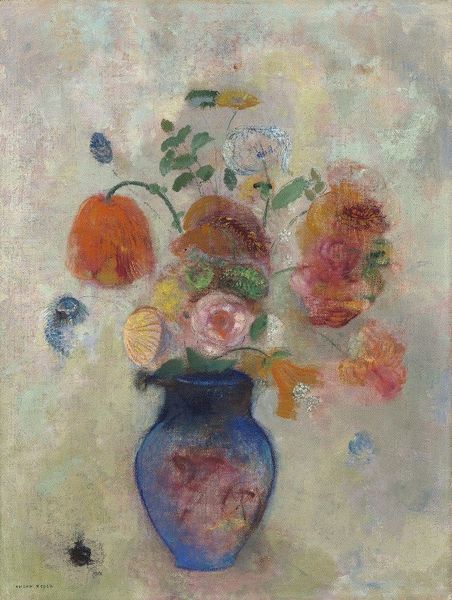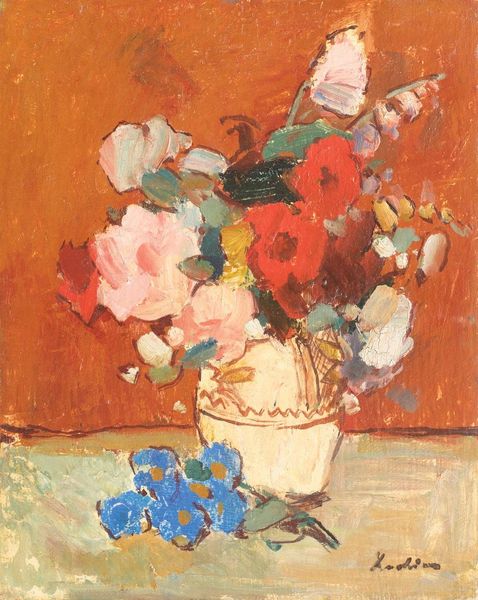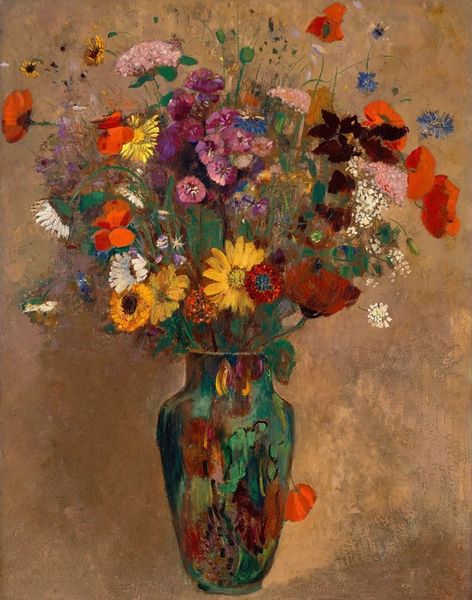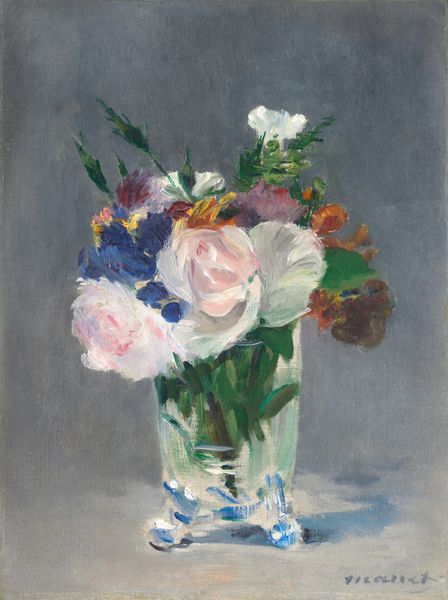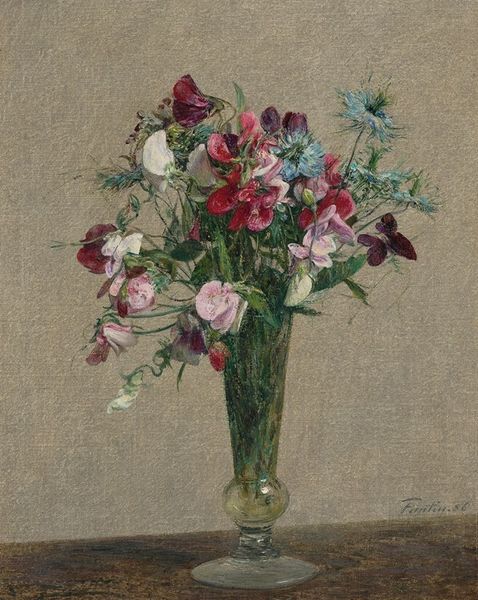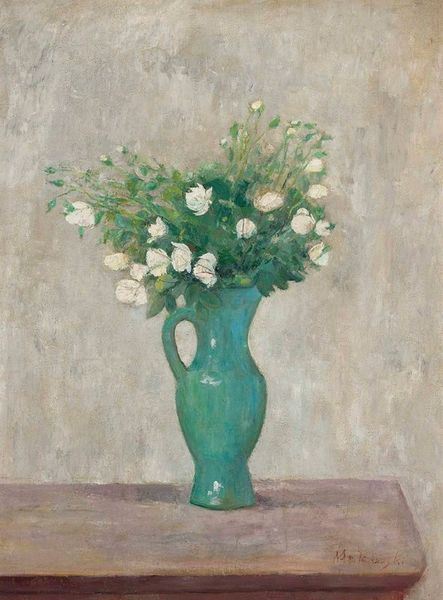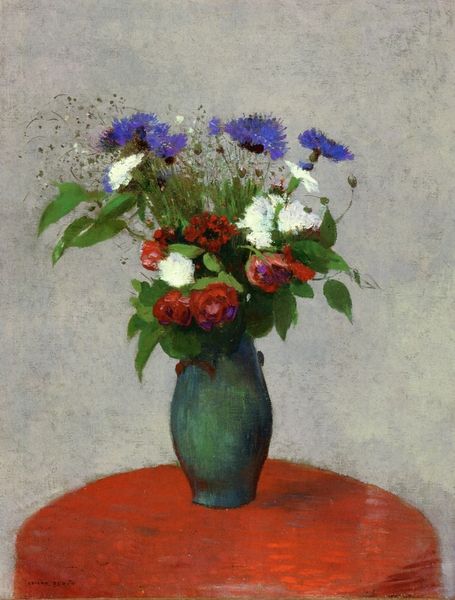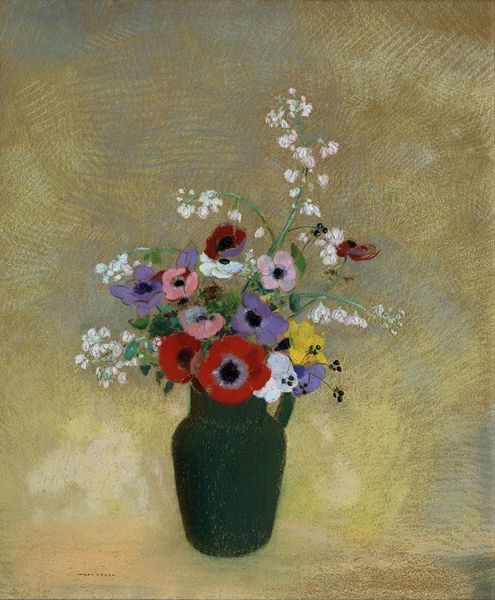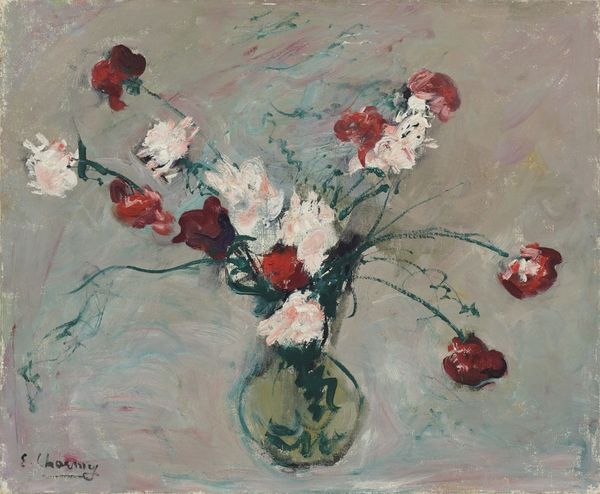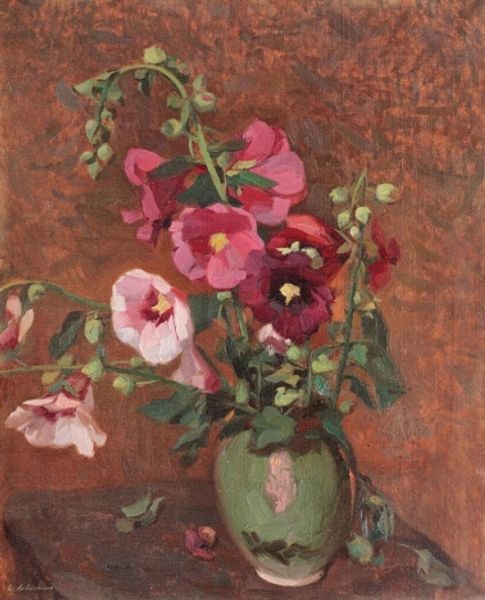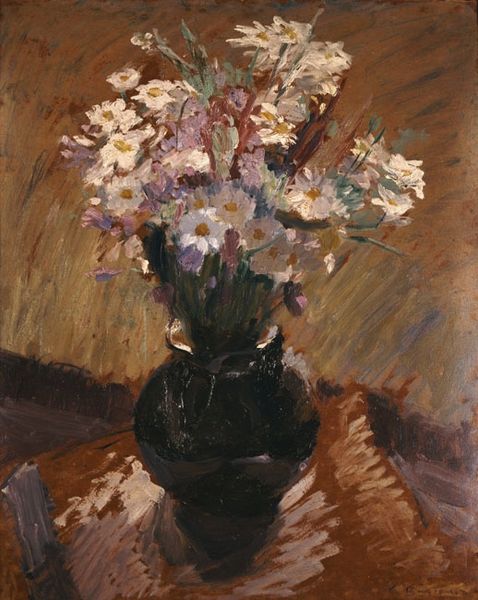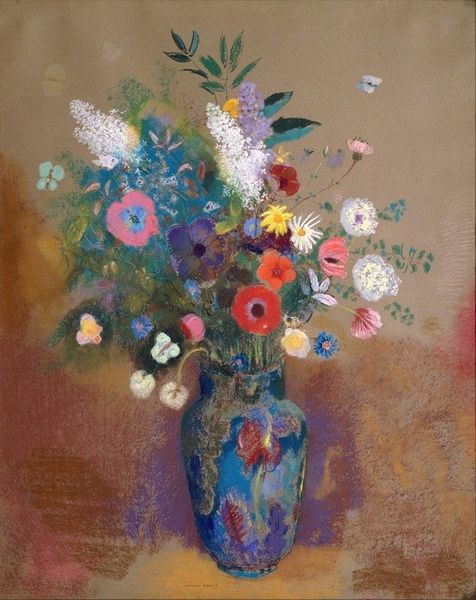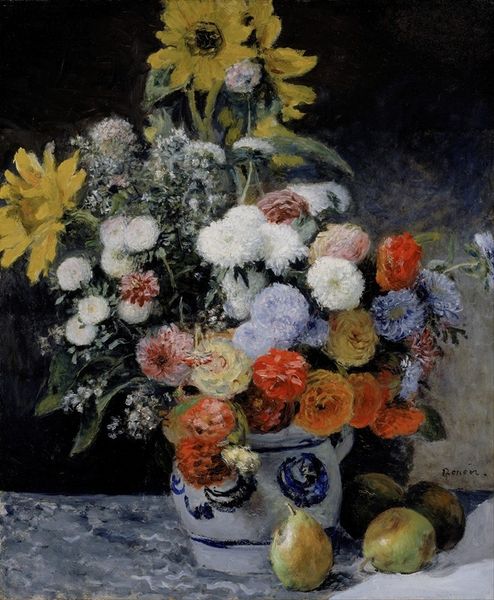
Copyright: Sever Burada,Fair Use
Editor: Here we have "Anemone," a still life rendered in oil paint by Sever Burada around 1925. The brushstrokes look thick and quite visible. What really stands out is the palpable texture achieved by applying the paint so generously. What can you tell me about this piece? Curator: Well, look at the materiality itself. Here, the impasto technique is crucial. Why? Because it draws attention to the artist's labor. Each visible stroke represents a deliberate act, a physical interaction with the materials. Editor: So, you’re saying the value isn’t necessarily in the flowers themselves, but in how Burada handled the paint? Curator: Precisely. Consider the social context. During this period, there was a rising tension between mechanized production and handmade goods. Artists like Burada, through their deliberate emphasis on manual techniques, implicitly commented on the value of craftsmanship. Note, too, that a painting in oils, like this, depended on global trade for the pigment and canvas. How does this impact your view? Editor: I see... The making of art isn’t isolated but reflects broader networks of labor and commerce. I guess I initially overlooked all of that, focusing only on the visual representation. Curator: Exactly. We have to look beyond just aesthetics. The very act of choosing oil paint, applying it so thickly, becomes a statement in itself. Art becomes a product and a critique of production. Editor: That’s a very different way to appreciate art than I was taught, I will certainly remember to consider the making, not just the image.
Comments
No comments
Be the first to comment and join the conversation on the ultimate creative platform.
